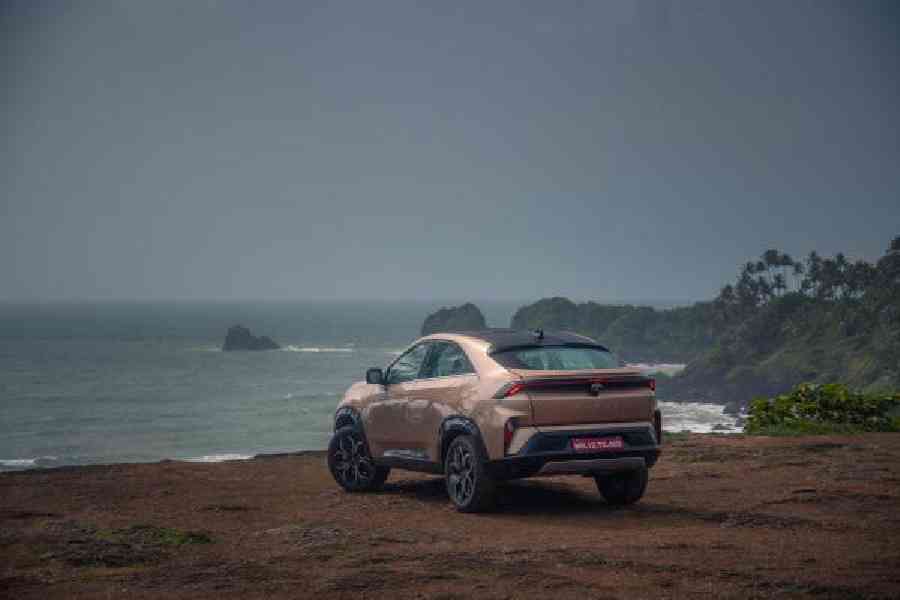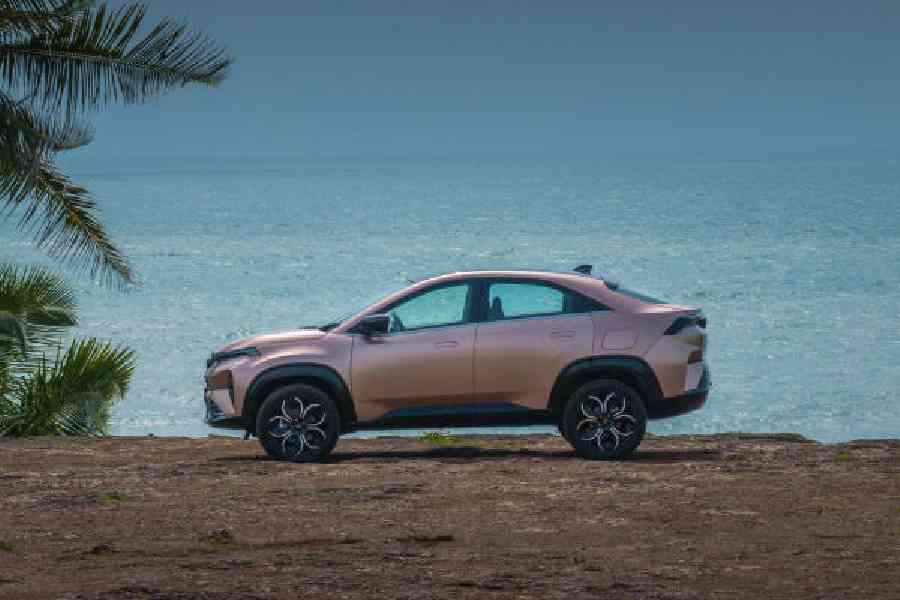There aren’t a lot of vehicles in the Indian passenger vehicle market that can be compared with the Tata Curvv in its various versions. In fact, for the top half or so of its price range, there is nothing comparable to it if one wants an SUV coupe. While the Citroen Basalt is competition in terms of price for the first half or so of the price range of the Curvv variants powered by internal combustion engines (ICE), the former does not come with any diesel engine. So there. The Curvv, whether electric or ICE powertrain, is largely in a field of one, which gives it an advantage — for now.
Last month, we drove the Tata Curvv.ev (Ahead on the Arc, t2oS, August 25, 2024). Last week, we got around to driving the new Hyperion petrol with a manual transmission and the Kryotec diesel with a dual-clutch automatic. And here are our first impressions.
ON THE OUTSIDE
All versions of the Tata Curvv look largely similar. Below the window line they are visually similar to the Nexon SUV although the wheelbase is a little longer. Above that is a sort of a fastback top that slopes down to the rear end from the top of the front windshield, creating the SUV coupe body style. Much of all this we are familiar with from the Curvv.ev, but there are two areas where the ICE vehicles are very obviously different from it.
The first is the front end. The smooth front of the Curvv.ev with its charging point is replaced by a two-part grille in shiny black. While the petrol had inserts in a shade of copper, the diesel had them in chrome. The headlamp clusters are near the edge of the bumpers and there are LED daytime running lights as well as a horizontal section going right across the width that has light signatures for various functions.
The second is the design of the wheels. The ‘Aero’ design wheels of the Curvv.ev have been replaced with petal design rims on the ICE vehicles. They are equally smart but less, shall we say, ‘geeky’.
Other than that there isn’t much of a difference with the EV. The flush door handles remain. The rear end is similar too. Of course, the ICE vehicles have tailpipes that the EV doesn’t. Else, they are the same. And that is not a bad thing.

The rear three-quarters is possibly the Curvv's sportiest angle
ON THE INSIDE
The biggest difference here is that the absence of the battery under the floor has allowed it to be lowered and that helps a lot with under-thigh support in the rear seats that are quite generous. The seating position is less knees-up than in the EV. The falling roofline might make taller persons a little cooped up, but for those of average height it seems fine.
The second is the change in the upholstery material to a burgundy hue that makes the interior look quite upmarket. The vehicles we drove had ventilated seats up front and electrical adjustments for the driver’s seat. Much of the rest is familiar from the Curve.ev and even the Nexon before it, the dashboard, the infotainment, instrument cluster, and so on. By now it has this kind of homecoming feeling.
A feature worth mentioning here is the ‘express cooling’ function. It is supposed to cool down the cabin faster than the air-conditioner functioning normally would. The vehicle we were driving had been standing in the sun for a while when we tried this. So, apart from the air-conditioner trying to chill the cabin, this function lowers the windows to let the hot air out, pretty much what many do manually, but here the car does it at the press of a button on the dash. Also worth mentioning is the JBL audio system, which delivers well-defined sound that remains that way whether the volume is turned up or down.
Other than that there are loads of features that are in no way any less than any other vehicle at any comparable price point in its range. In fact, the Curvv has a bit of an edge in terms of price. So yes, while it doesn’t have direct competitors, it can certainly poach buyers from other vehicles, mainly SUVs.
The boot is a generous 500 litres.

The Gold Essence paint job shows of the lines of the Curvv to effect
ON THE ROAD
This is where the pudding, or the SUV coupe in this case, had to prove itself. Tata Motors has got the ride of its vehicles fairly well sorted out for a while now and the Curvv was no different. Bumps are soaked up pretty well and not a great deal of the undulations filter into the cabin. It works better at higher speeds and some ruts and ridges on the road filter through when progress is slower.
The stiffer suspension setup helps with the handling though and the Curvv was poised and confidence-inspiring at all the speeds from slow traffic to highway runs. There is some understeer, more so in the diesel, under acceleration, but otherwise it is pretty neutral.
Coming to the engine and transmission, the 1.5-litre, 3-cylinder Kryotec diesel with the dual-clutch, seven-speed automatic transmission is effortless to drive whether in the city or the highway.
The 118bhp of power and 260Nm of torque is adequate for most situations. The DCT shifts smoothly too, whether going up or down. There are also paddle shifters to move up or down the cogs but the response seemed a tad slow and we found it better to leave it in the Sport mode (the other modes are City and Eco) and use the throttle to tell the vehicle what to do if there was some urgency and it worked quite well. The City mode is good enough for most conditions, even highways. Eco is largely for the frugal and the patient.
The new 1.2-litre, three-cylinder, turbocharged Hyperion petrol with the six-speed manual is the other version that we got to try. This engine makes 120bhp and 170Nm at the peak and is a rather rev-happy unit. It’s one of those engines that will play along nicely if you are looking for some driving fun, but that will, expectedly, take a bit of a toll on the fuel efficiency. Under normal city driving it works fine and hassle free to the extent that being a manual there has to be the usual shifting up and down the gearbox. An interesting feature in this one is the availability of some extra torque in situations like a quick overtaking manoeuvre. Flooring the accelerator in third gear will tell the engine control unit (ECU) that there is some urgency and it delivers extra torque, much like the kickdown in a torque-convertor automatic. This is a nice feature and a novel one at that.

Rear seat passengers now get the benefit of more under-thigh support and a not so knees-up seating position as compared with the Curvv.ev
THE CALL
As we said in the beginning, for those who like this body style, there isn’t an alternative in the market in this price range, particularly if one is looking for a diesel. There is enough equipment and features to make this competitive with other vehicles and SUVs at similar prices and the drivetrains are good too; we think the diesel is the better one. There is also a three-year, 100,000km warranty that should make this a fairly worry-free purchase. And, of course, for the first time in this price range comes the novelty of this body style. There’s much going for the Curvv.











